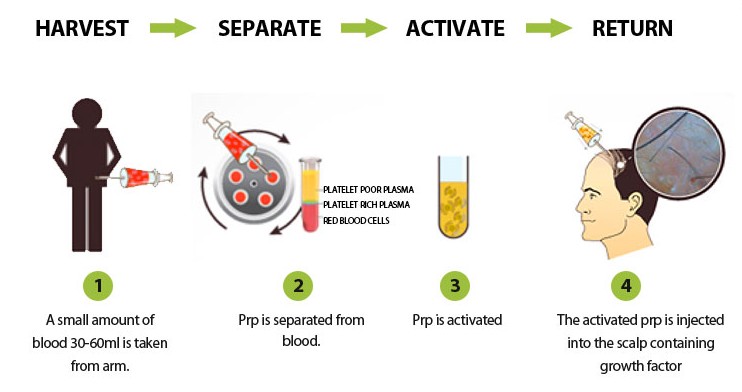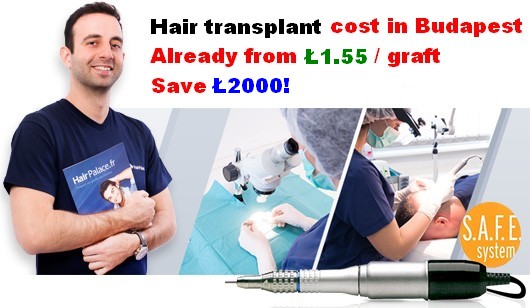Hair loss can affect people across all genders and ages. New hair loss therapies are invented whether in the form of medicine, supplements or surgical interventions to combat premature hair loss and restore lost hair. Not all therapies work with the same efficiency, and many people report not getting any or not getting the desired results when taking medicine or using special cosmetic products that were created to treat hair loss. Platelet-rich plasma is not a novel technique, and although it was invented in 1970, its use in cosmetic surgery came only later, in the early 2000s.

What is PRP Therapy?
PRP is used in many medical fields such as dentistry, sports medicine, and of course cosmetic surgery. Hair loss clinics use it to treat pattern baldness both in women and men. PRP relies on the collection of the patient’s own blood before the blood goes through two centrifugation processes. The resulting plasma can have a five-fold concentration of platelets than normal blood. PRP contains several types of growth factors (e.g. epidermal growth factor, insulin-like growth factors, connective tissue growth factors, etc.), which are believed to stimulate dormant hair follicles to resume their growth. PRP works by injecting the platelet enhanced plasma into the patient’s scalp.
Which are the advantages of PRP treatment?
The advantages of PRP therapy in hair loss therapy include:
- Minimally invasive (blood collection and re-injection of resulting plasma into the patient’s scalp);
- Short time of procedure (usually 60 to 90 minutes);
- Quick recovery period as a result;
- Non-surgical treatment suitable for both men and women;
- Reduction in hair loss and increase in hair counts;
- Infections are extremely rare as white blood cells, which act as the body’s natural defence, are a component of the PRP;
- It costs less than hair transplant, however, depending on the number of sessions, the costs can be comparable with that of a hair transplant;
- Given that PRP is obtained from the patient’s own blood makes doctors confident it’s a safe procedure to stop hair loss and stimulate hair growth.
Are there any disadvantages of PRP injections?
While no serious side effects have been registered, there are some disadvantages associated with PRP therapy, these include:
- There haven’t been any large-scale randomized clinical trials proving the efficiency of PRP for hair loss, although there have been clinical trials carried out on a smaller number of people, all with promising results; however, the long-term benefits of PRP are yet to be clarified;
- Some patients reported that the procedure was uncomfortable and sometimes painful even under topical anaesthetic;
- In some rare cases infections can occur;
- There is some concern whether PRP may affect or enhance performance in athletes, and whether PRP injections may influence doping tests, however, the World Anti-Doping Agency has removed PRP injections from its prohibitions;
Wrap-up: Is PRP Hair Therapy worth it?
PRP treatment is not yet backed up by solid scientific evidence, therefore, patients who have undergone this procedure are continuously monitored to determine the effectiveness of the procedure and whether other treatment methods should be applied as well. The clinical trials that have been carried out so far have not reported any major side-effects, and in terms of efficiency, the long-term benefits of PRP have not yet been conclusively proven. In this context, it depends on each patient whether they choose PRP or opt for a hair transplant surgery instead.
